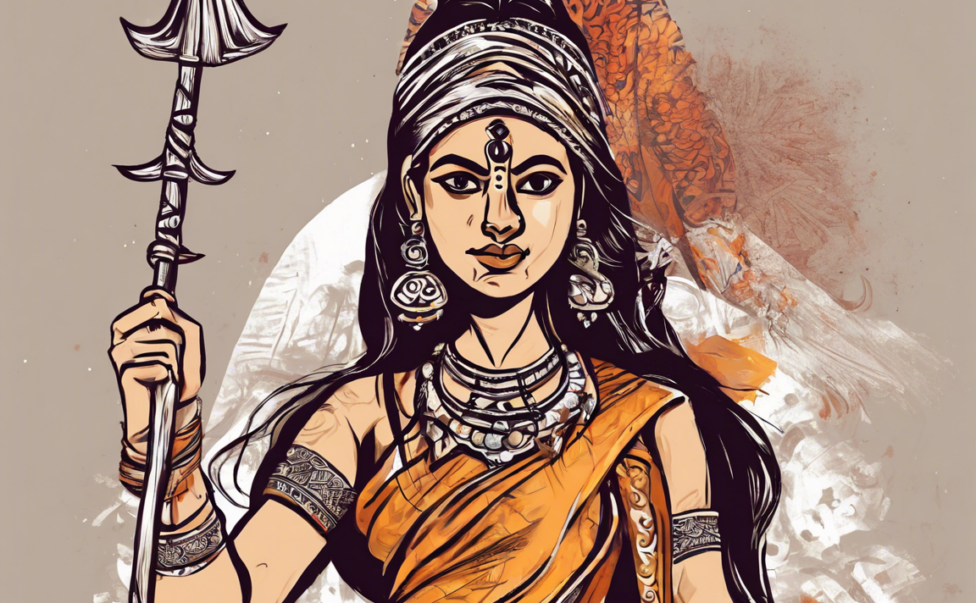Unleashing the Power of Sita: Warrior of Mithila
In the rich tapestry of Indian mythology, the character of Sita holds a special place as the personification of virtue, loyalty, and strength. While often depicted as the ideal wife and embodiment of feminine grace, she also embodies feminine power and resilience in the face of adversity. In the epic Ramayana, Sita’s story is one of love, sacrifice, and ultimately reclaiming her agency as a woman. One of the most compelling retellings of Sita’s story can be found in Amish Tripathi’s book “Sita: Warrior of Mithila,” where she is reimagined as a fierce warrior and leader.
The Myth of Sita
Sita is a central figure in the ancient Indian epic, the Ramayana. She is born from the earth and is discovered by King Janaka, who raises her as his own daughter. She is known for her beauty, virtue, and unwavering devotion to her husband, Lord Rama. When she accompanies Rama into exile, she is abducted by the demon king Ravana, leading to Rama’s epic quest to rescue her. Sita’s time in captivity is a testament to her inner strength and resolve, as she remains steadfast in her faith and integrity despite being subjected to various trials.
Reimagining Sita as a Warrior
In “Sita: Warrior of Mithila,” Amish Tripathi presents a bold interpretation of Sita’s character, casting her not just as a princess or wife, but as a skilled warrior and leader in her own right. In this retelling, Sita is born with magical powers and is trained in martial arts and warfare from a young age. She is depicted as a fearless fighter who can hold her own in battle and command the respect of her peers. Tripathi’s Sita challenges traditional gender norms and stereotypes, showing that femininity and strength are not mutually exclusive.
Themes of Empowerment and Identity
“Sita: Warrior of Mithila” explores themes of empowerment, identity, and self-discovery. Sita’s journey is not just about reclaiming her kingdom or reuniting with her husband, but about discovering her own inner strength and potential. Through her trials and tribulations, she learns to embrace her powers and stand tall as a warrior in her own right. This reimagining of Sita’s story serves as a powerful reminder that women are capable of greatness and are not defined by their relationships or roles in society.
Lessons from Sita’s Story
The tale of Sita offers several valuable lessons that are as relevant today as they were centuries ago. Sita’s unwavering loyalty to Rama teaches us about the power of love and commitment in the face of adversity. Her resilience in the face of hardship reminds us of the importance of inner strength and conviction. Her eventual triumph over her enemies shows us that justice and righteousness will prevail in the end. By embodying these qualities, Sita becomes a timeless symbol of courage, grace, and integrity.
The Legacy of Sita
Sita’s story has inspired generations of people across the world, transcending boundaries of time and culture. Her unwavering devotion to duty, her fierce independence, and her unshakeable faith have made her a beloved figure in Hindu mythology. Through retellings like “Sita: Warrior of Mithila,” her character continues to evolve and adapt to modern sensibilities, offering new perspectives on femininity, power, and agency.
FAQs
-
Who is Sita in Hindu mythology?
Sita is a central female character in the ancient Indian epic, the Ramayana. She is known for her beauty, virtue, and unwavering devotion to her husband, Lord Rama. -
What is the significance of Sita’s character?
Sita represents ideals of femininity, loyalty, and resilience. Her story serves as a moral compass, teaching important lessons about love, sacrifice, and integrity. -
How is Sita portrayed in “Sita: Warrior of Mithila”?
In this retelling by Amish Tripathi, Sita is reimagined as a strong and skilled warrior with magical powers. She challenges traditional gender roles and stereotypes, embodying feminine power in a new light. -
What are some lessons we can learn from Sita’s story?
Sita’s story teaches us about love, loyalty, resilience, and the power of inner strength. Her character serves as a timeless inspiration for courage and integrity. -
How has Sita’s character evolved over time in retellings and adaptations?
Sita’s character has been reinterpreted and reimagined in various forms of literature, art, and media. Each adaptation offers a unique perspective on her role as a symbol of feminine power and agency.

